Are there any reports of unilateral aphantasia? e.g. people who report being able to imagine things in the right hemifield, but not the left one?
17.09.2025 19:10 — 👍 9 🔁 5 💬 1 📌 0
@neddo.bsky.social's very nice commentary on @matthiasmichel.bsky.social and @smfleming.bsky.social's BBS target article also arguing that conscious perception may form fast even if postdiction suggests it only "vulcanizes" slowly.
05.10.2025 13:11 — 👍 9 🔁 2 💬 1 📌 1
The call for commentaries on our BBS paper is out now (deadline October 15): shorturl.at/Hu3Yu. In the paper (shorturl.at/4Rbk6), we provide recommendations and outstanding issues about designing experimental paradigms, analyzing data, and reporting the results of studies on unconscious processing 👇
30.09.2025 17:05 — 👍 12 🔁 13 💬 0 📌 1
A pleasure to engage with such a rich paper, and excited to see all the other commentaries as they come out! 3/3
30.09.2025 16:11 — 👍 1 🔁 0 💬 0 📌 0
I argue that postdiction is quite consistent with fast but initially partial and unsettled perception. Must such rapid and revisable perception overflow cognitive access? That's not obvious -- there's evidence access can be fleeting too! Nor is it clearly empirically objectionable if it does. 2/3
30.09.2025 16:11 — 👍 6 🔁 1 💬 2 📌 0
What does postdiction show about the speed of consciousness? In this forth. piece in BBS, I respond to @smfleming.bsky.social + @matthiasmichel.bsky.social's claim that postdiction shows consciousness is slow -- too slow for its purpose to be online action guidance. 1/3 philpapers.org/rec/PHIPAT-14
30.09.2025 16:11 — 👍 17 🔁 4 💬 2 📌 0
Laboratory Technician
About the Opportunity SUMMARY The Subjectivity Lab, directed by Jorge Morales, and housed in the Department of Psychology at Northeastern University is excited to invite applications for a full-time L...
🚨🚨🚨 The Subjectivity Lab is looking for a lab manager! The position is available immediately. We want someone who can help coordinate our large sample fMRI study, plus other behavioral work. Because *gestures at everything* the job was approved only now (ends in June 2026). Great opportunity! 🧵 1/4
29.09.2025 14:22 — 👍 22 🔁 29 💬 2 📌 1
Larkin was right it seems... 😔
29.09.2025 20:09 — 👍 1 🔁 0 💬 0 📌 0
... Moore et al.'s study of 54 stroke survivors finds such biases are very rare, not unique to neglect, don't provide evidence of semantic processing, nor unconscious perception of any kind. Let's finally update the textbooks! 2/2
29.09.2025 16:39 — 👍 1 🔁 0 💬 0 📌 0

Cover of Tony Harrison's A Kumquat for John Keats

Signed inside cover of Tony Harrison's A Kumquat for John Keats
RIP Tony Harrison. One of my prized possession, this copy of his wonderful poem, A Kumquat for John Keats. Every time I eat one, I'm reminded of it, and how a full life ought to feel. www.lookingtoleeward.se/tony-harriso...
27.09.2025 20:34 — 👍 4 🔁 0 💬 0 📌 0
Adam Zeman's response to a quartet of letters regarding his brilliant review of aphantasia research. As he says, wonderful how much energy this young field has right now. Hats off to Adam himself for lighting the spark!
14.09.2025 21:32 — 👍 12 🔁 2 💬 0 📌 0
LISTSERV 16.5 - PHILOS-L Archives
€3,000 essay prize on 'The philosophical implications of aphantasia/hyperphantasia', just announced by @bencenanay.bsky.social. Open to anyone who got their PhD after May 2018 and current PhD students. Deadline: Dec 1, 2025. Announcement and details: listserv.liv.ac.uk/cgi-bin/wa?A....
04.09.2025 20:16 — 👍 12 🔁 8 💬 1 📌 0
Our new paper explores an analogy between representations of objects and representations of events, finding that similar illusions arise for both! Check it out 👇
04.09.2025 16:31 — 👍 53 🔁 13 💬 2 📌 0

Great to have another paper with @chazfirestone.bsky.social @ianbphillips.bsky.social and the brilliant Hanbei Zhou out! In this paper we demonstrate that stimuli within events are perceived further apart in time — an event-based analog of “object-based warping”. psycnet.apa.org/record/2026-...
04.09.2025 16:27 — 👍 85 🔁 20 💬 3 📌 3
You will definitely not regret reading this fantastic new paper by my (and @chazfirestone.bsky.social, Hanna Pickard and Monique Wonderly's) brilliant student, Rui Zhe Goh. I learned a huge amount working with him on it.
02.09.2025 14:27 — 👍 9 🔁 1 💬 0 📌 0

Can we “see” value? Spatiotopic “visual” adaptation to an imperceptible dimension
In much recent philosophy of mind and cognitive science, repulsive adaptation effects are considered a litmus test — a crucial marker, that distinguis…
Visual adaptation is viewed as a test of whether a feature is represented by the visual system.
In a new paper, Sam Clarke and I push the limits of this test. We show spatially selective, putatively "visual" adaptation to a clearly non-visual dimension: Value!
www.sciencedirect.com/science/arti...
28.08.2025 20:18 — 👍 40 🔁 15 💬 2 📌 1
Nice piece on our inattentional blindness paper.
02.07.2025 13:10 — 👍 4 🔁 0 💬 0 📌 0
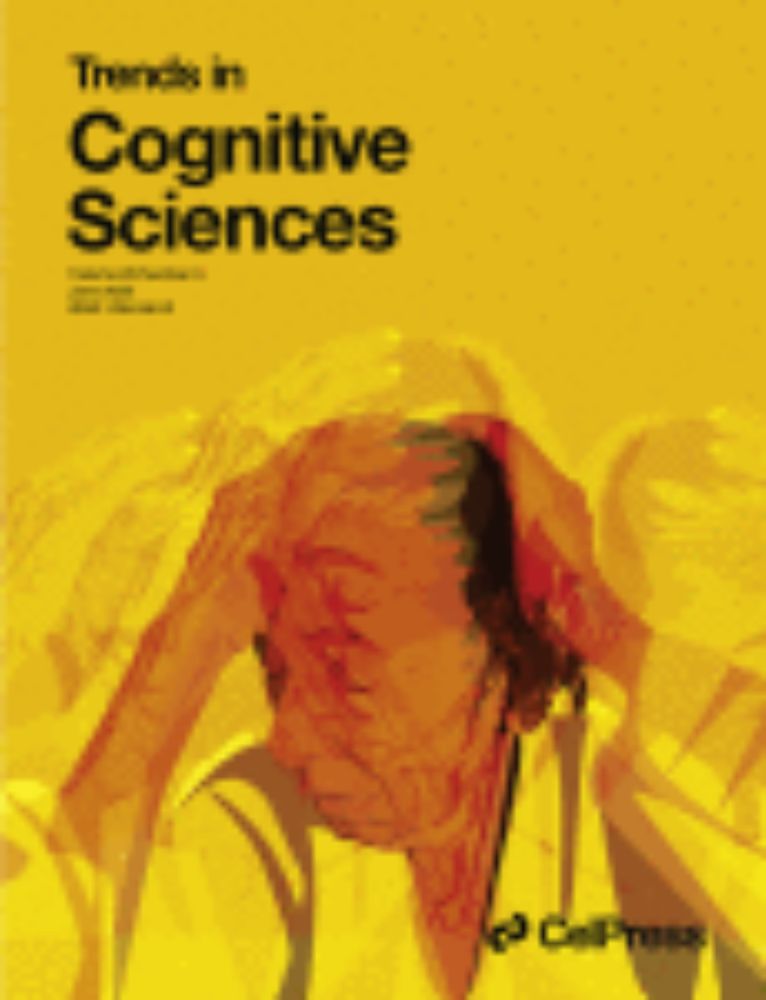
Spared spatial imagery solves the puzzle of aphantasia
Short new piece on aphantasia just out in TiCS: www.sciencedirect.com/science/arti... Key idea: aphantasia often involves a lack of *visual-object* imagery (explaining subjective reports & objective correlates) but selectively spared *spatial* imagery (explaining preserved task performance).
28.06.2025 13:10 — 👍 22 🔁 3 💬 1 📌 0
This is indeed a very cool preprint!
21.06.2025 17:25 — 👍 3 🔁 0 💬 0 📌 0
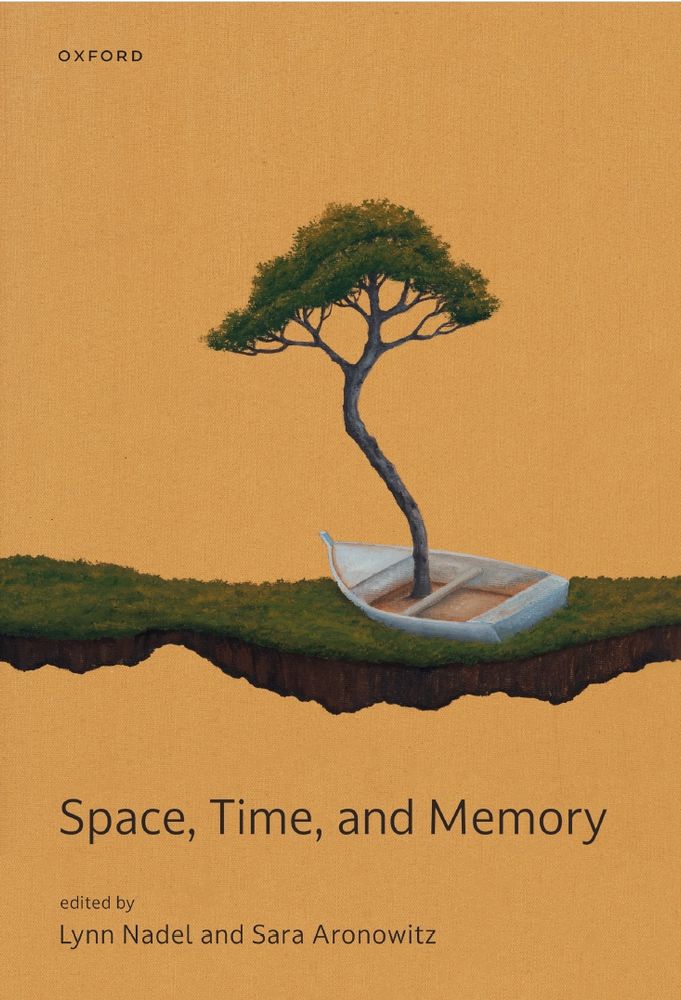
Book cover image showing a tree growing out of a white boat
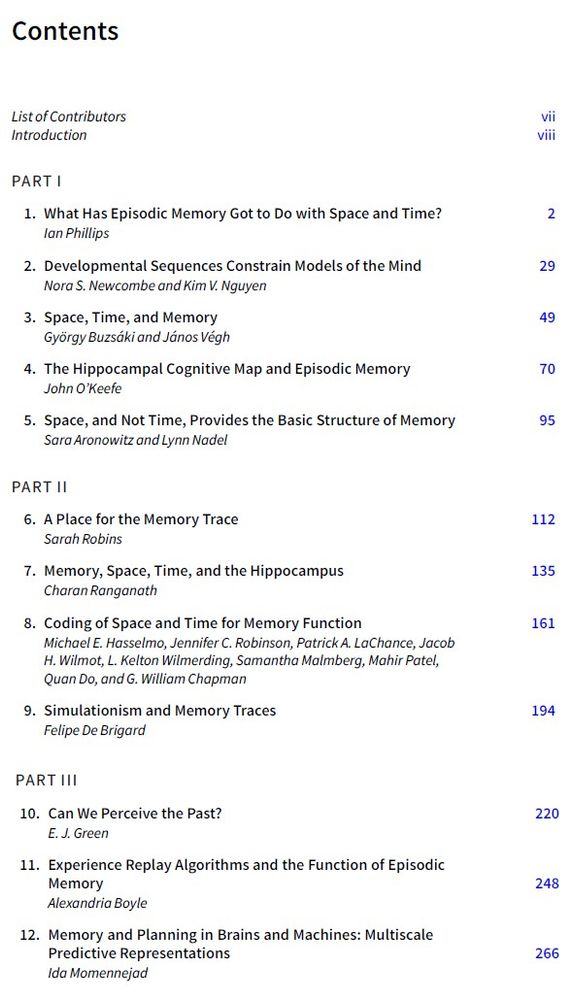
Book contents page
Delighted to be the opening chapter of this brilliantly conceived (and beautifully covered!) new interdisciplinary collection on Space, Time, and Memory edited by the wonderful Lynn Nadel and Sara Aronowitz. Even better, the whole thing is free to download here: library.oapen.org/bitstream/ha...
10.06.2025 12:10 — 👍 8 🔁 4 💬 0 📌 0

Dog-sled going past the Le Château Montebello.

Main public room in Le Château Montebello decorated for Christmas. The building is the world's largest "log cabin".
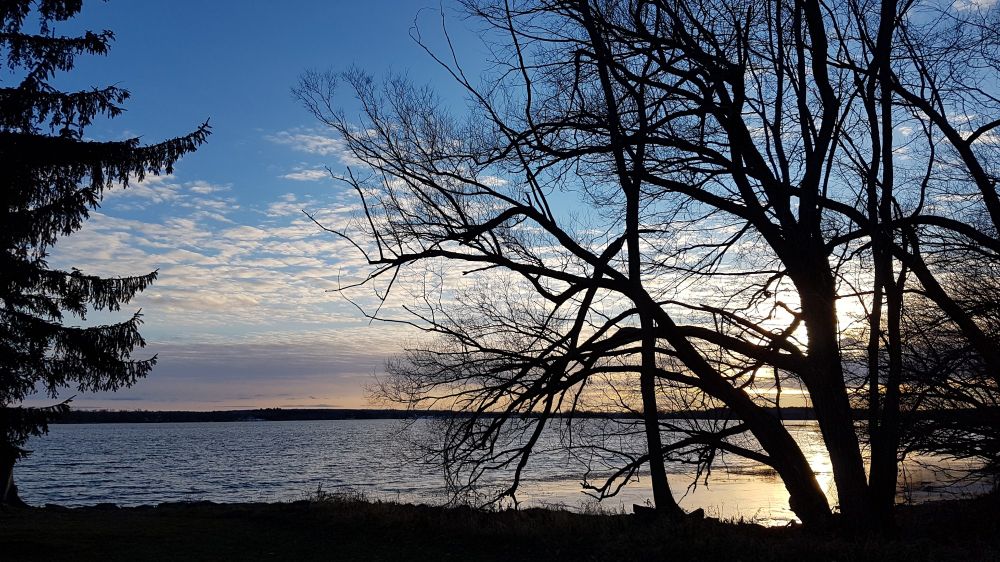
Le Château Montebello is situated on the banks of the Ottawa river, separating Quebec and Ontario.
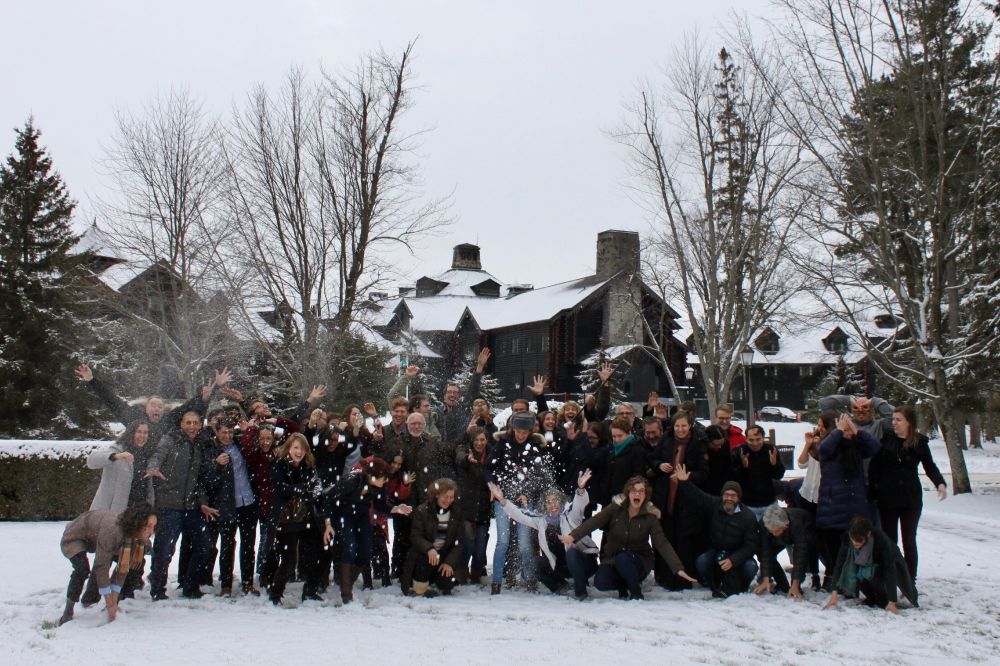
Group photo the school of 2018 at the Winter school on the Neuroscience of Consciousness
CIFAR invites applications for senior PhD and postdocs to participate in the Neuroscience of Consciousness Winter School, held in Montebello, Canada Dec 10-12, 2025. The Winter School is hosted by members of CIFAR’s Brain, Mind, and Consciousness program. Please repost.
cifar.ca/next-generat... 🧠🧪
03.06.2025 21:13 — 👍 79 🔁 52 💬 5 📌 3
Super interesting, fresh way of thinking about dorsal/ventral streams, object tracking & aphantasia. View that aphantasia involves 'unrendered' amodal geometric imagery fits v nicely w/ what I've argued in recent work too, e.g., onlinelibrary.wiley.com/doi/10.1111/..., philarchive.org/rec/PHISSI-5.
02.06.2025 17:28 — 👍 23 🔁 4 💬 0 📌 1
Thanks, Carolyn! No direct test of bound features being available I'm afraid. It's consistent with our results that there's only sensitivity to/awareness of basic ‘low-level’ or ‘pre-attentive’ features (though fwiw we did find a modest correlation between being sensitive to shape and to colour).
20.05.2025 21:38 — 👍 2 🔁 0 💬 1 📌 0
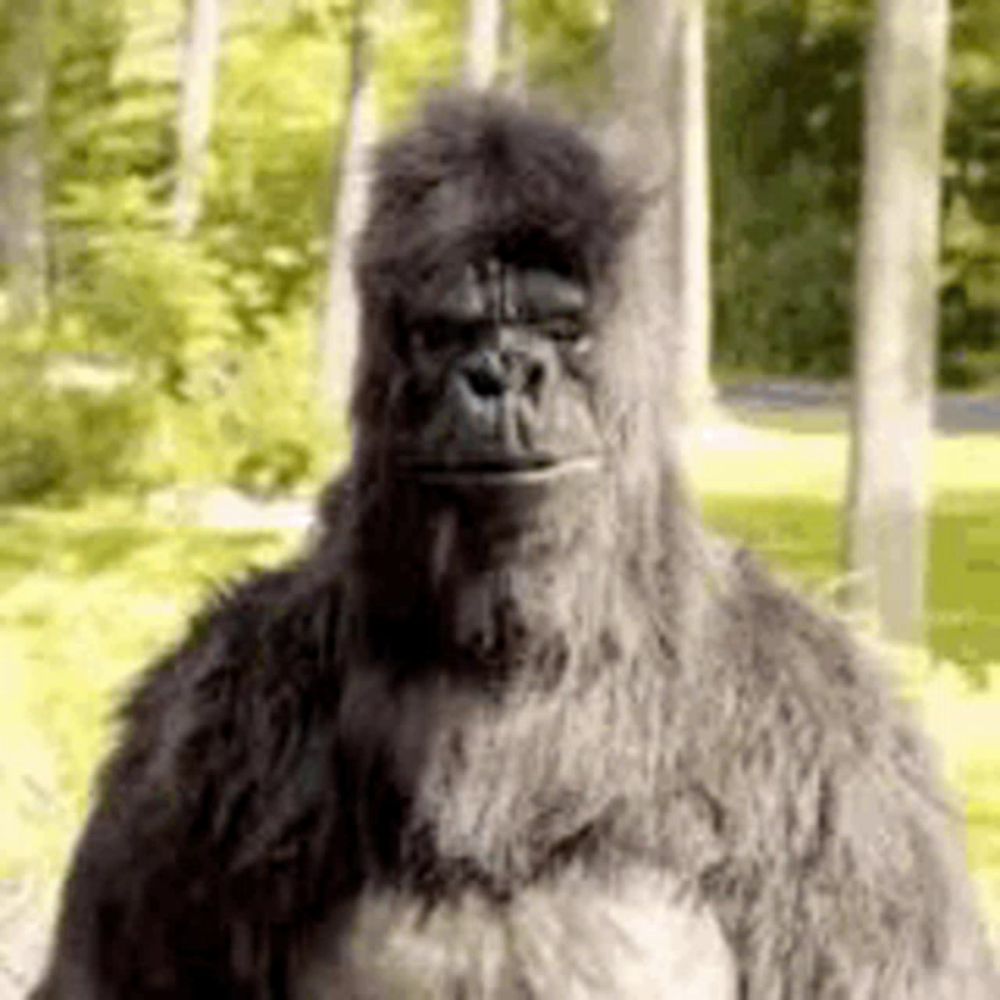
a gorilla is standing in the woods with trees in the background and looking at the camera .
Alt: a gorilla is standing in the woods with trees in the background and looking at the camera putting its thumbs up excitedly
So, the inattentionally blind see more than we think! This is foremost v strong evidence of significant residual sensitivity in inattentional blindness. But, as we discuss, arguably our findings also suggest that although attention enhances conscious perception, it isn't required. 12/12
20.05.2025 13:15 — 👍 7 🔁 0 💬 2 📌 0
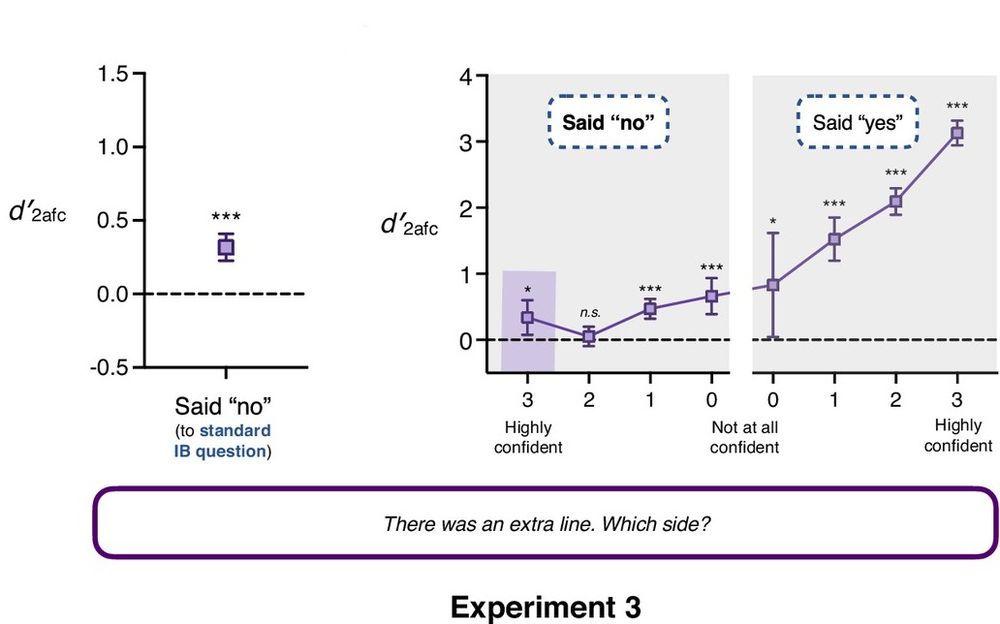
Data from Exp. 3 in which above chance sensitivity to location was found even amongst highly confident non-noticing subjects.
And this result even held when just looking at participants who were *maximally* confident that they hadn’t noticed anything. 11/12
20.05.2025 13:15 — 👍 3 🔁 0 💬 1 📌 0
Jonathan Wolff,
Political Philosopher.
Fellow British Academy
Emeritus Professor Blavatnik School of Government, Oxford
Wolfson College
President The Royal Institute of Philosophy
THFC supporter in 'early season false hope’ mode.
#academic
Philosopher of Science, PhD, MD. Dean’s Professor and Chancellor’s fellow, Logic and Philosophy of Science, UC Irvine. she/her
https://sites.socsci.uci.edu/~rossl/
One of the world's top academic philosophy journals, JPhil is published monthly by the non-profit organization, Journal of Philosophy, Inc.
Experimental psychologist at UAM | Working on unconscious cognition and reproducible research | https://mvadillo.com/
Professor of Philosophy and Director of the EPP BA/BSc at the University of Warwick. My UKRI-funded FLF Communicative Mind project researches human and non-human great ape communication and cognition, and the evolution of language. 🇪🇺🍉 he/him
Professor of Cognitive Neuroscience at the FIL, UCL, using human neuroimaging to study how our prior knowledge influences the way we perceive the world. https://www.fil.ion.ucl.ac.uk/team/visual-perception-team/
Philosopher of perception and mind at the University of Nottingham. Interested in all things perceptual.
Webpage: https://gmphilosophy.wixsite.com/giuliamartina
Studying awareness and metacognition at BCBL in Spain, formerly at U of Birmingham and Imperial College London. Eclectic music fan, husband and dad.
Postdoc at Yale | PhD in Cog Neuro (BCBL) | Interested in visual representations in natural & artificial neural networks, consciousness, & metacognition
Postdoc @ MIT Brain & Cognitive Science | PhD @ YalePsychology | Computational Modeling | Metacognition | Social Cognition | Perception | Women’s Health Advocacy marleneberke.github.io
Philosopher, writer, Ελληνοβρετανός. Hon Professor, Sheffield University. Mind, consciousness, illusionism, cog-sci, Ελλάδα.
Website: https://www.keithfrankish.com/
YouTube: https://www.youtube.com/@KeithFrankish
Philosopher and writer. Occasional traveller.
Professor of Psychology; Rider of Bicycles; Seeker of Justice. Applied cognitive psychologist, studying attention & memory, some disinfo too. (He/him; 1st gen college student). With maybe some pictures of Cookie the bernedoodle.
QWOP, Getting Over It, new stuff coming
Philosopher at La Trobe Uni (views mine) in Naarm/Melbourne. Thinking about practical knowledge, knowledge of experience, and other stuff I lack. Originally from NZ. He/him
https://scholars.latrobe.edu.au/ycath
Researcher at Hanse-Wissenschaftskolleg. Phil of perception, mental representations; Aesthetics; Epistemology of understanding. Antifascist activist at ANPI.
Philosopher @ UC Santa Cruz (soon to be at U Lisboa). Interested in belief, evidence-resistance, social identities, ideology, ignorance, delusions. || Languages: EN, PT, ES || www.carolinaflores.org for papers
Experimental psychologist studying social learning and memory, assistant professor @psychillinois.bsky.social, SAB chair @projectimplicit.bsky.social, AE at JEP:G, immigrant, 🏳️🌈, he/him
Cognitive Scientist
Postdoc at UC Berkeley
Studying numerical representation & the evolution of belief revision















